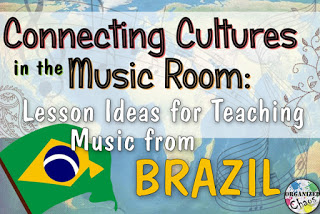There are so many things we can learn about a culture by studying its music, especially when we can study it authentically (more on that caveat in a minute). A lot of things don’t even have to be made overt through deliberate conversation and presentation- they are felt through the experience of the music. If, for example, a student from another culture studied traditional palace music from Japan, they would grow to understand the importance of subtlety, harmony, and deference in Japanese culture. If they studied the music in the way that it is studied in Japan, the student would also learn the importance of respecting elders and authority, attention to detail, and upholding honor. These cultural aspects are difficult to experience and deeply understand as an outsider without going and living in Japan for an extended period of time. Music is one avenue for providing some degree of that experience within the classroom. Music, by its very nature, expresses emotion, communicates a message, and requires participants to work towards a goal in a specific manner- usually in cooperation with others.
Context, such as teaching method, costumes, language, accompanying activities, and performance environment play a very important role in presenting music from another culture. Why waste the opportunity to give students insight into another perspective and culture when you present a song? I know, I know- we can’t all be experts in every culture. But guys! We have the internet! There is a wealth of information out there that we can access through a quick Google search. Any time I find a cool-looking song in a workshop, textbook, or other source, I always do a quick look around the internet to see if I can dig up some background information. I have found that even in respected texts there is often misinformation. I have seen songs attributed to an entirely different continent in some well-respected textbooks! If it’s in a published book, chances are you can find a video or audio sample of someone from the original culture performing it somewhere online. Even better, you can often find out where and when the song would typically be used. Is it a funeral song? A stone-passing game played by children? Teach it that way. Is this song always performed with a particular dance? Sung at the start of a particular festival? Do the song with the dance or some of the activities from the festival.
I would also strongly suggest that you teach the song in its original language. I am fluent in 2 languages and conversational in 2 others, and I have learned the power that language has in communication. Even when we translate the meaning of the words accurately, some of the original “feeling” is lost in translation, no matter how well we do it. The composer wrote it to the particular sounds and cadence of the original words, so any translation is always going to be a little awkward. That’s not to say we shouldn’t teach students what the words mean, or even use a translated version, but at the very least, I think it gives better insight into the song when the students can hear the song in the original language.
Lesson #4: Learning about different cultures expands our worldview
I know I am being a bit demanding here with all my suggestions, but it’s only because I think this aspect of music teaching is SO IMPORTANT! We as human beings have so much to learn from each other. One of the primary benefits of music is the transmission of beauty in all its forms, and there is so much beauty out there to explore! When we as teachers take the time to give our students a glimpse into another culture’s perspective, no matter how small, we give students (and ourselves) the opportunity to expand the boundaries of their thinking. Aren’t we ultimately in the business of nurturing better human beings? People who can understand and relate to a variety of perspectives are a tremendous asset to society- and we have an opportunity to nurture that virtue. How awesome! 🙂
Get started!
Here are some great online resources to get you started incorporating musical experiences from around the world. The best resource, though, is a person with first-hand experience! Talk to your PTA and community programs; you may be surprised by how many people are willing to help you share their culture with your students. I pick a person who can share personal experience over a book or video any day 🙂
YouTube (by far the best way to find recordings of original performances of songs)
Wikipedia (of course you have to fact-check, but if you’re having trouble finding out information about a song, you can usually find something here, including links to original sources)
If you want a good lesson to get you started with an overview of music from several different countries, I have
this lesson set in my TeachersPayTeachers store. I am going to be adding more in-depth units focused on specific regions in the future, so check back in my store for those or click the green star in
my store to follow and get updates on the new products as they’re added.
Thanks for having me here today! I would love to hear your ideas on songs and activities from around the world that have worked in your classroom. Leave a comment!



One Response
These are great points to be taken into consideration. How lucky to have some traveling experience. As I lived overseas myself for six years, I understand how difficult it really is to experience culture solely through music. Hopefully we can give our students a taste of culture and inspire them to learn more about their world.